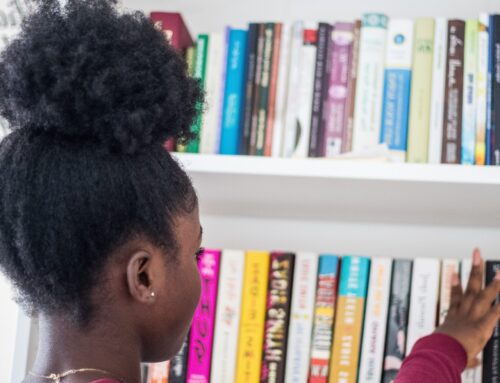Project Based Learning for Kids: Everything You Need to Know
If you’ve heard parents and educators buzzing about project based learning, or PBL, you may be wondering what all the fuss is about. What does “project-based” learning actually entail, and how does it help students?
In a nutshell, project based learning is learning by doing. Instead of memorizing facts, students come together to execute projects with real-world applications. Research from the Autodesk Foundation has shown that the project approach benefits kids by:
-
Improving attendance and student engagement in the classroom
-
Building student-teacher relationships
-
Strengthening students’ interpersonal skills
As a result, students raise their test scores, as well as their self-confidence. Read on to discover some project based learning examples.
Project-Based Learning Idea #1: Let’s Get Moving
“Let’s Get Moving” teaches students ages ten and up about basic human biology, physical fitness, and emotional resilience. Students are asked to come up with a full day of exercise-related activities, from a slideshow presentation about the benefits of daily exercise to demonstrations of safe exercises for people who:
-
Have been recently injured
-
Are suffering from long-term stress
-
Have chronic disabilities
-
Are elderly
Through crafting these exercise programs, students will learn more about the experiences of people in these groups. Students simultaneously hone their research skills and develop empathy as they absorb important information about exercise’s effects on the heart, circulatory system, parasympathetic nervous system, and other areas.
If your area’s COVID-19 restrictions allow it, holding the final presentation at a physical therapy center might add an extra dimension to this learning activity.
Project Based Learning Idea #2: Adapt It
“Adapt It” is an extension of Hollywood’s obsession with remakes. It asks middle school or high school students to read a short story, then adapt it into a short film. Working in groups of five, teens divide up the roles of head writer, director, camera operator, video editor, and head props master. (All students are required to take turns acting as well.)
Here’s the twist: instead of making one 10-minute short film, each student must write their own “take” on the story that demonstrates a critical understanding of its themes. The subsequent films should be two minutes long each and individually create a unique viewing experience to showcase the learner’s creativity.
For a thoroughly dynamic educational experience, the roles of director, camera operator, video editor, and head prop master must be traded off as well. This will throw students outside of their comfort zones. Students acquire enhanced language skills, technical skills, and project management skills.
As the final stage of the project, hold a screening, either in-person or online, so that students can show off their work.
Project-Based Learning Idea #3: Walking Tour
If you’re interested in teaching your students local history, geography and writing skills, have them make their own site-specific walking tours and accomplish all three goals at once!
Begin by assigning each student group a different section of your city, preferably one with some historic significance. Have students research each neighborhood and produce interesting audio, visual or spoken presentations on each area. Deliverables can include:
-
A map (either physical or online) of notable sites
-
A walking tour which the entire class takes in person
-
A quiz, administered to the rest of the class by each group, on what the tour taught them
This project based learning activity can work for students in a variety of age groups, depending upon how it’s scaled. For instance, children ages seven and up might have success in creating a simple audio tour, while high school-aged students would benefit more from a multi-media iteration of this project.
Project-Based Learning Idea #4: Design Your Dream Home
This math-related project-based learning idea helps students ages 14 and up with applied spatial skills and geometry. Using 3D room planning software, such as Room Arranger, students design the “ideal home” of the future, incorporating environmentally smart features as well as kitchens, bathrooms, and social areas that will fit their family’s needs.
Final deliverables may include:
-
An online 3D floor plan, complete with furniture and other accessories
-
Full blueprints of the Dream Home
-
A building budget and list of potential contractors
-
An oral and written presentation of their dream home that explains the reasoning behind its design
The Bottom Line: Project-Based Learning Benefits Kids
Not every student is good at sitting still and passively absorbing facts—some need a more active, hands-on learning experience. While it’s important that essential facts be retained, a curriculum that incorporates project based learning can help break up the school day with absorbing, relevant learning activities.
When done well, the project approach to learning can deliver stellar results, including:
-
Increased creativity in students’ thinking
-
Better problem-solving skills
-
Internship-style work experience
-
Improved technology skills
If you know a teacher who has been struggling with student engagement, why not share the good news about project-based learning with them today?
Sources:
DestinationImagination.org. 10 Benefits Of Project-Based Learning. https://www.destinationimagination.org/blog/10-benefits-of-project-based-learning/
Edutopia.org. 10 Ready-to-Borrow Project Ideas. https://www.edutopia.org/blog/10-ready-borrow-project-ideas-suzie-boss
PBLworks.org. Why PBL?. https://www.pblworks.org/why-project-based-learning
Bob Perlman A Review of Research on Project-Based Learning. http://www.bobpearlman.org/BestPractices/PBL_Research.pdf




